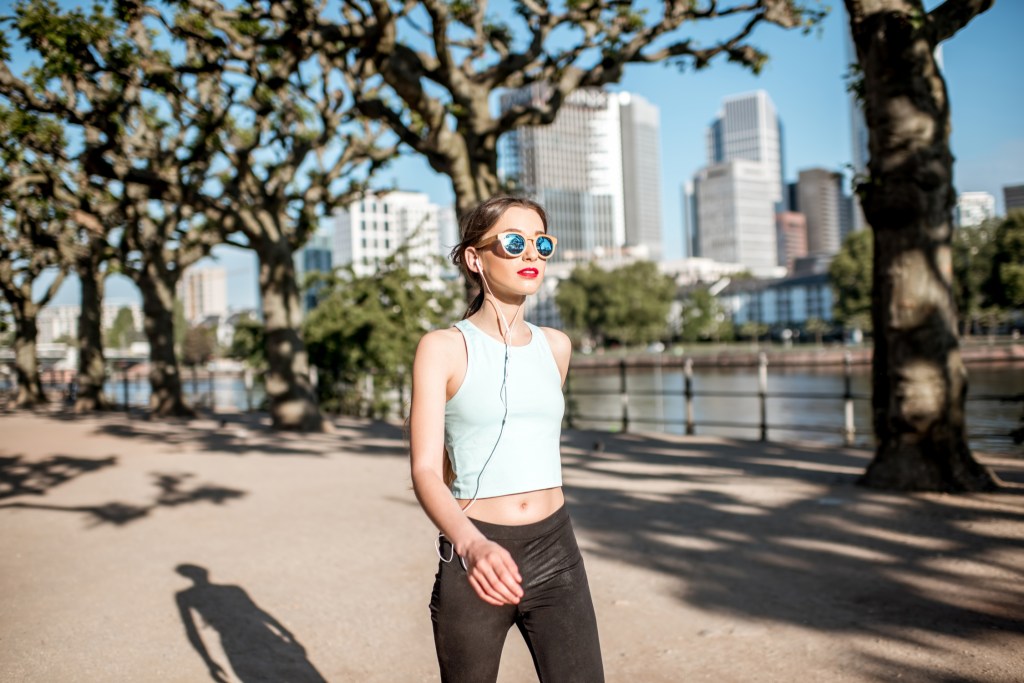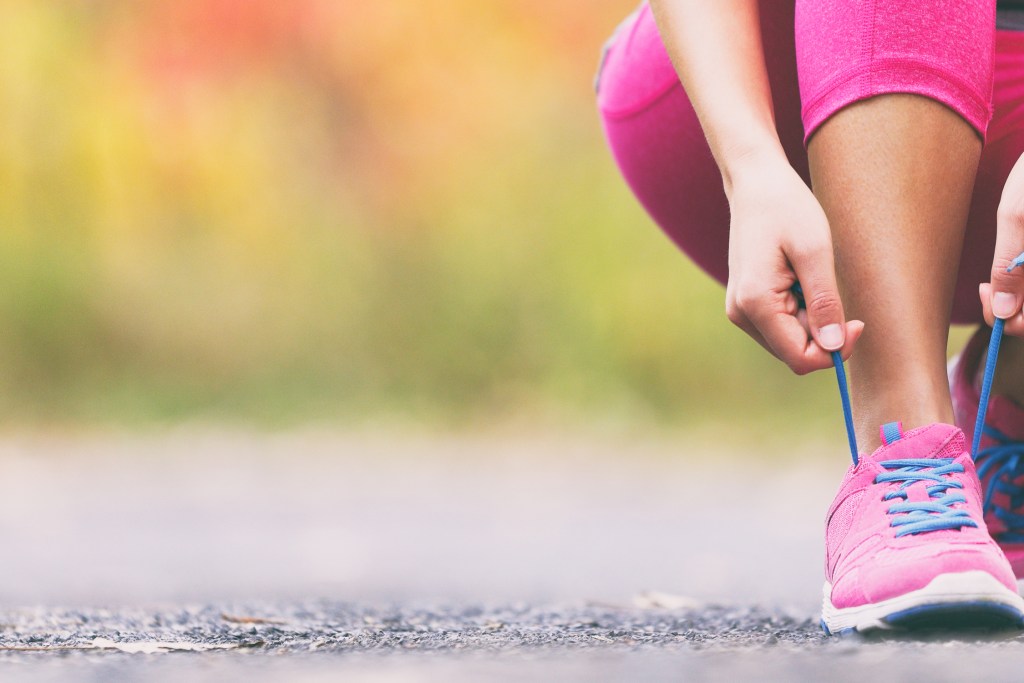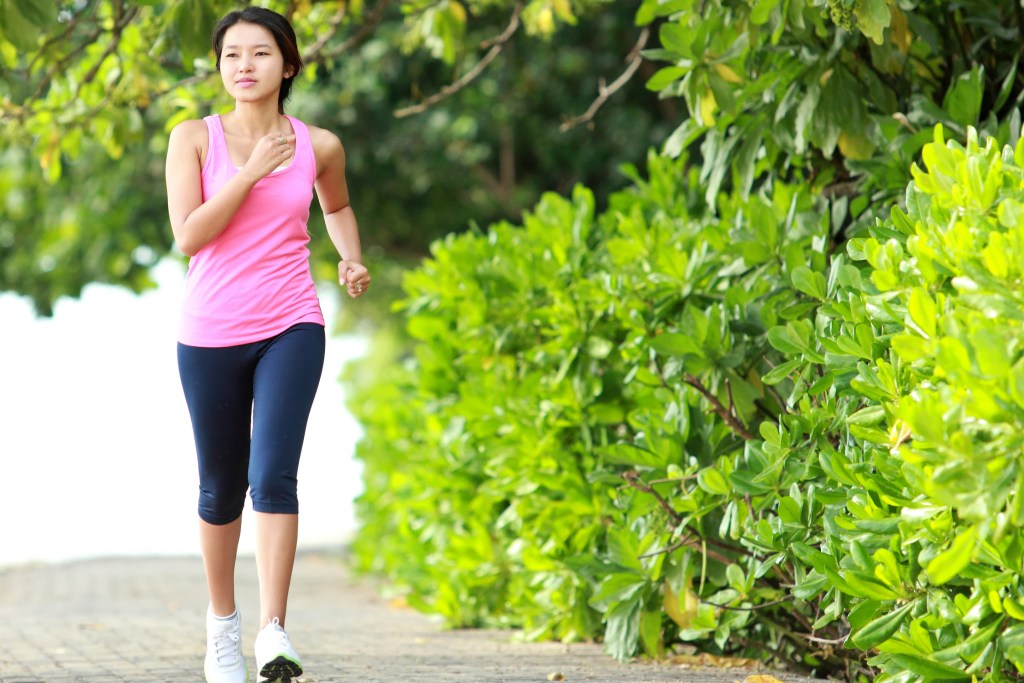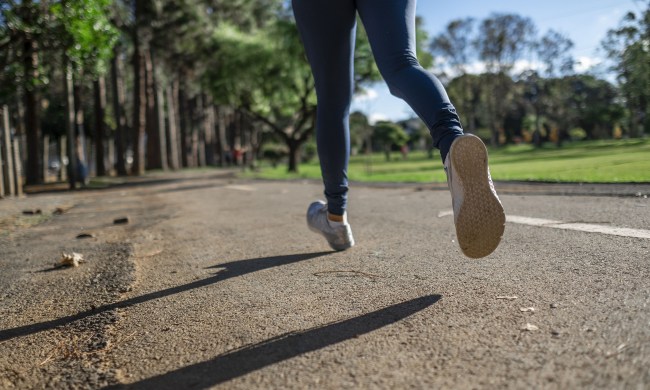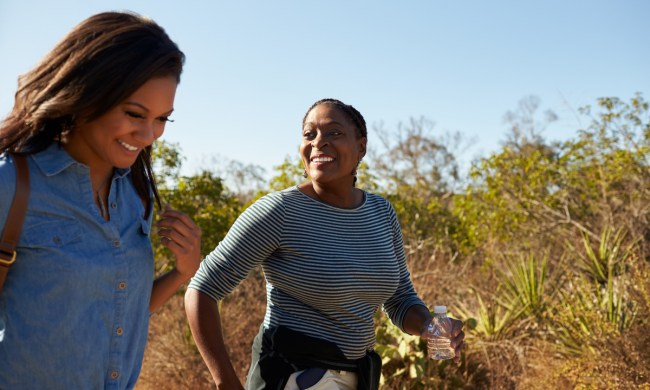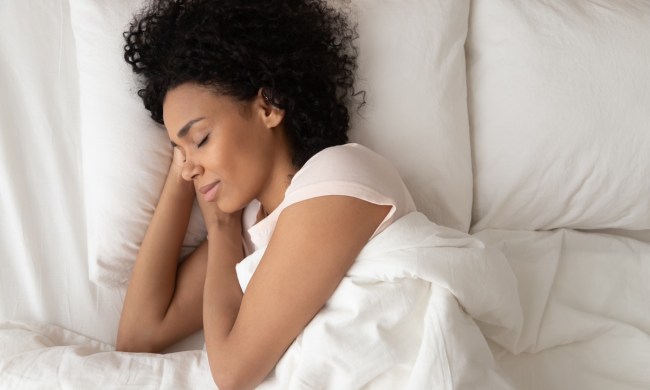Because you’ve been walking for most of your life, it probably isn’t something you give a lot of thought to. Walking is just second nature; a way to get where you need to go, be it across the room or across the street. Yet, walking works your body in some unique and efficient ways. In fact, it’s one of the best forms of exercise there is, but with one caveat: You need to be doing it right. And, even though you’ve had most of your life to practice, there’s a good chance you might not be. However, all it takes is some self-assessment, simple steps to ensure proper form, and a good pair of sneakers to reap the many benefits of a workout that can be done almost anytime and anywhere.
Here’s what you need to know about taking the right steps (literally) to make walking part of your exercise regimen.
Why walking is so good for you
What can walking do for your body? A better question might be what can’t it do? “Walking is health-promoting,” says Michele Olson, PhD, senior clinical professor of sport science and physical education at Huntington College in Montgomery, Ala. “It improves our cardiovascular health and fitness, makes our bones in our hips stronger and is relatively low on impact, so it is joint- and body-friendly.”
One recent study found that walking can lead to short-term gains such as improved fitness, body composition, and blood pressure and cholesterol levels, and long-term benefits including reducing the risk of coronary heart disease, and mortality. Another report based on multiple studies found that walking reduced the risk of cardiovascular events by 31%, and cut the risk of dying by 32%.
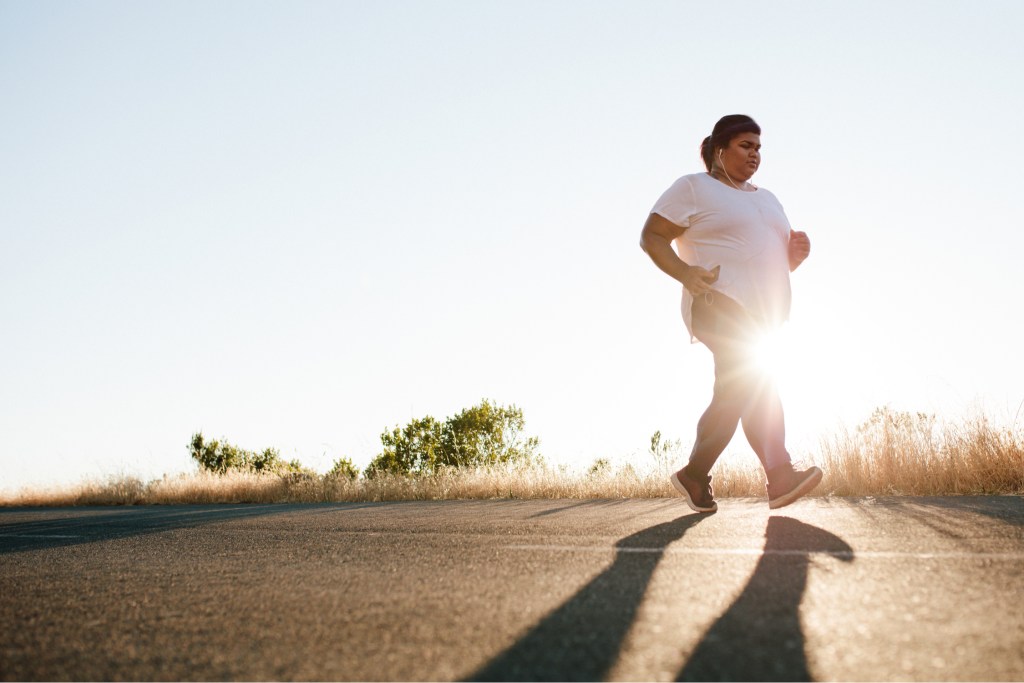
Because walking is low impact, it can be a great choice if you want to get cardiovascular benefits, but don’t want to stress your joints and muscles. And, because walking is typically done outdoors, you’ll also get the extra physical, mental, and emotional benefits that come with green, or outdoor, exercise.
Women who are perimenopausal or menopausal might also want to trade in hard-core training sessions for walking. Research is showing that too much intense exercise is actually counterproductive and can lead to weight gain in women in their 40s and older, says Sherry McLaughlin, physical therapist and founder of the Michigan Institute for Human Performance in Troy, Mich. Strenuous exercise raises the stress hormone cortisol, and as women age and estrogen levels lower, the body becomes less able to process that excess cortisol. Too much cortisol leads to the body storing fat and accompanying weight gain.
“When you reach a certain age exercise shouldn’t be a stressor, it should be a stress reliever,” says McLaughlin. “Instead of running, try going for walks.”
Finally, one of the great things about walking is it’s easy to do just about anywhere, and you don’t need to invest in fancy gear. “Walking is virtually equipment-free,” says Olson. “You really just need a good quality shoe or sneaker to couple with a top and leggings or shorts that you likely already have.”
The do’s and don’ts of good form
To get the most benefits, you need to walk correctly, and it’s not quite as simple as just putting one foot in front of the other. McLaughlin says common mistakes include walking with too wide a stance, walking on the outside of the foot, and walking with the toes pointed out. Most of us aren’t even aware we’re doing any of these things, but if you have heel, foot or lower back pain, Achilles tendon or plantar fasciitis, that’s likely a sign you’re walking incorrectly.
The mechanics of a correct walk include:
* A proper stance, meaning your feet should only be 2 to 4 inches apart, and your toes should point straight ahead. Most of us walk with a stance that’s much wider, or point our toes in or out, says McLaughlin.
* Take comfortable, long strides as opposed to short, choppy steps, says Olson. You want to roll through your feet from heel to midfoot to toe as you step. You want to push off the big toe, which will really load your glutes, says McLaughlin.
* Swing your arms opposite to your legs, which will occur naturally if you have a proper stance and point your toes ahead.
* Use good posture, and keep your eyes and chin level, and your shoulders relaxed, advises Olson. “Imagine a graceful animal with good posture and fluid movement,” she says.
Added bonus: Walking correctly can whittle your waistline in a way most other exercises can’t. “Walking correctly activates the transverse abdominis muscle. That’s the muscle that flattens the waistline and it doesn’t define with sit-ups and crunches,” says McLaughlin.
Another thing to avoid: walking with weights, which can throw off the natural gait and lead to injury. “To use weights that really make a difference, they need to be at least in the 3- to 5-pound range, which is hard to manage while executing a full and proper arm swing,” says Olson.
Easy ways to assess yourself
The best way to gauge how you’re walking is to go to an exercise professional. But, if that’s not possible, McLaughlin recommends trying the following self-assessments:
* Try walking slowly heel to toe on a straight line. You want to be able to do so without your toes pointing out. If you can, your form is likely a-OK.
* Stand in front of a full-length mirror with your feet hip-width apart, toes pointing straight ahead, and squat without lifting your heels. If your knees fall in or out, chances are you’re not walking correctly. “Squat mechanics are an extension of what happens when your feet hit the ground,” says McLaughlin.
* Stand on one leg, then touch the floor with your opposite hand while hinging at the hips. If one leg is wobbly that can indicate you aren’t pushing off properly on that foot when you walk.
If the shoe fits…
Just as leg, foot, and back pain can indicate you’re not walking properly, calluses, blisters, and similar ailments can indicate your shoes don’t fit well. When it comes to walking for exercise, a good shoe is a must – and it’s not one size fits all.
McLaughlin says she’s a fan of minimalist shoes – lightweight, low-profile shoes that you can twist and bend when you pick up – because it makes your foot and leg muscles work harder. “Your foot has so many bones and muscles. It is designed to work as a cushion and you can take away that ability with a super supportive shoe,” she says.
McLaughlin recommends trying different brands’ minimalist shoe models to see what feels best. Some companies, such as Vivobarefoot and Xero Shoes, focus entirely on shoes with a “barefoot” feel. You can check out the Vivobarefoot Geo Racer II for women and men. The shoes are ultra-lightweight, vegan, and made from recycled materials – plus the company gives you 100 days to return the shoes for any reason. Or, take a look at Xero Shoes Prio for men and women, which are vegan, designed for a natural feel and motion, and come with a 5,000-mile sole warranty.
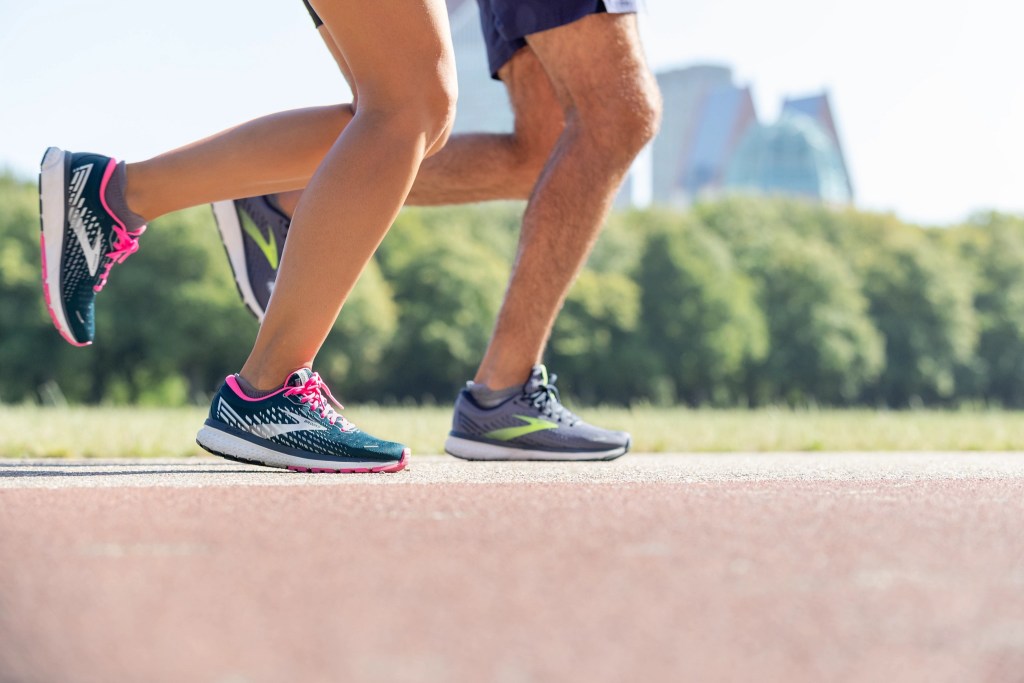
If you don’t want to go with a full barefoot feel when walking, you can use a running shoe. Olson recommends finding a shoe with a lower profile than a typical running shoe that is fairly level from heel to toe. “You don’t want to have a shoe with a large, thick heel,” she says. “The extra shock absorption that may provide is not necessary for walking and can contribute to possible ankle injuries.”
The Brooks Ghost 13 for men and women offers neutral cushioning, and every purchase supports girls’ running programs. If you don’t want to invest in a gym and a walking shoe, McLaughlin says you can use cross trainers for walking. The Ryka Graphite Training Shoe is lightweight and low profile, making it a perfect multi-tasker for the studio, weight room, and pavement.
You’ll also want a good pair of socks with a band around the arches, such as Brooks Ghost Midweight Socks made with odor-resistant fabric.
How far and fast you should walk
When it comes to walking, “10,000 steps” seems to be the magic number we hear so often. But benefits can be found at even 6,000 steps per day, and it’s fine to work your way up instead of shooting for a 10,000-step goal that could make you give up before you start, says Olson.
As for pace, Olson says walking a 15-minute mile, which is 4 mph, is typically recommended, but again, it’s fine to work your way up. “A 15-minute-per-mile pace ranks as moderate-intensity cardiovascular exercise, so we want to aim for that level of intensity because research shows moderate-intensity activity promotes fitness and health such that, on average, a moderately fit person lives about 5.8 years longer than a sedentary individual,” she says.
However, cardiovascular protective benefits are evident in those who walked just 5.5 miles per week at a leisurely two mph, according to Harvard Health. The longer and faster you walk, the greater the benefits, but researchers agree that even small increases in daily walking are better than none at all.
If you’re ready to reap the benefits of walking, don’t wait any longer. The sooner you get started, the better it is for your health. Just practice proper form, get a good pair of shoes, and hit the road, grass, or trails.
BlissMark provides information regarding health, wellness, and beauty. The information within this article is not intended to be medical advice. Before starting any diet or exercise routine, consult your physician. If you don’t have a primary care physician, the United States Health & Human Services department has a free online tool that can help you locate a clinic in your area. We are not medical professionals, have not verified or vetted any programs, and in no way intend our content to be anything more than informative and inspiring.
